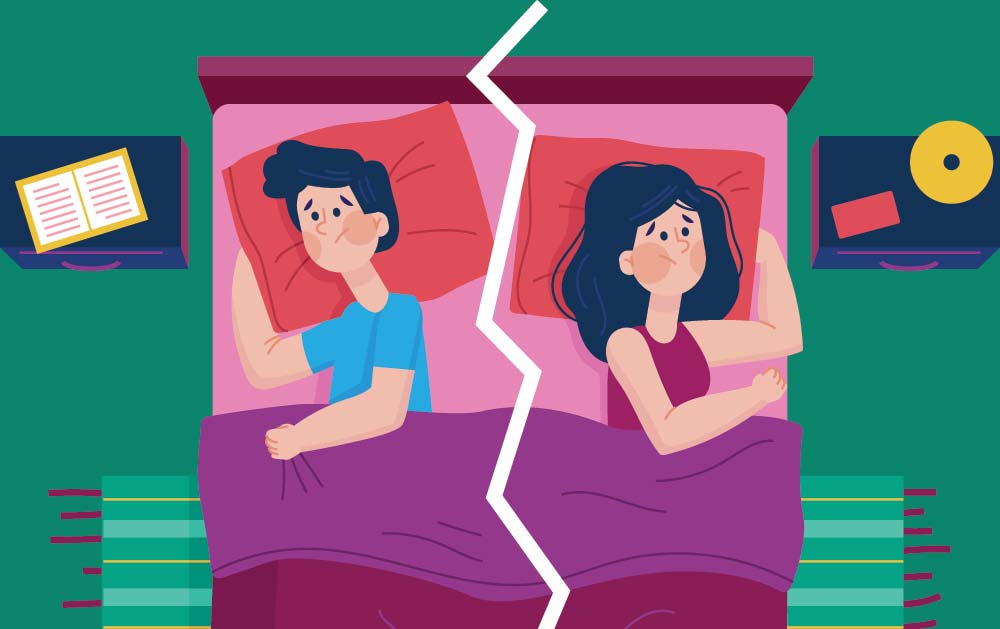
Sexual Disorders (Part 1)
Several studies show that a significant number of couples’ experience sexual problems due to individual differences in desires and frequency. In Pakistan, lack of accurate information on sexual health topics like wet dreams, masturbation, intercourse, and menstruation contributes to sexual dysfunctions. Misguided beliefs and misinformation, especially regarding masturbation, can lead to guilt and negative associations. Women often lack proper education on sexuality, leading to misconceptions about sex for pleasure. Media portrayals further exacerbate confusion and reinforce stereotypes, potentially promoting unsafe behaviors. While sexual dysfunctions may not pose physical health risks, they can severely impact mental well-being, causing depression, anxiety, and feelings of inadequacy.
– A sexual problem refers to difficulty experienced during any stage of the sexual act that hinders individuals or couples from enjoying sexual activity
– To understand this, knowledge of the Human Sexual Response Cycle is essential
– This cycle consists of four phases: Desire/Excitement, Arousal, Orgasm, and Resolution
– The Desire/Excitement Phase is the first stage, preparing the body for sexual intercourse
– The Arousal Phase involves sexual excitement prior to orgasm
– The Orgasm Phase is the climax, typically associated with ejaculation in males
– The Resolution Phase allows for the possibility of multiple orgasms, with refractory periods varying from immediate to as long as 12 to 24 hours
What is the difference for a male and a female?
Sexual response differs between males and females. Males need to stop after orgasm, while women can move between excitement, orgasm, and plateau phases. Understanding these differences is crucial to avoid performance pressure and sexual dysfunctions.
Common Causes
- Sexual difficulties can stem from physical, emotional, or psychological factors, such as medication side effects, injuries, or prostate issues
- Emotional factors like trust issues can impact sexual relationships, while psychological factors such as depression or past trauma can also contribute
- Discussing sex can be challenging, and inaccurate information may lead to misunderstandings
- It is important to have open and mature conversations about sexual health to address any concerns
Challenges Faced by Men:
- Inability to attain an erection
- Inability to maintain an erection adequately for intercourse
- Delay or absence of ejaculation despite adequate stimulation
- Inability to control timing of ejaculation
- Premature Ejaculation
- Impotence
- Retarded Ejaculation
There are numerous reasons for a decrease in libido, including hormonal imbalances, stress, medications, sleep deprivation, and more. Testosterone levels play a key role in male libido, and hormone therapy can help restore them to a normal level. Additionally, getting enough sleep is crucial for maintaining a healthy libido, as sleep deprivation can lead to fatigue and decreased sex drive. Stress can also negatively impact libido by affecting hormone levels. Chronic alcohol use can lower libido by depressing important parts of the body that regulate sexual function. Certain diseases like diabetes and cardiovascular disease can contribute to a decreased libido, as can certain medications and illegal drugs like marijuana, cocaine, and heroin. It is important to consult a urologist for a thorough evaluation and appropriate management, which may involve seeing an endocrinologist or psychologist.
Challenges Faced by Women:
- Inability to relax vaginal muscle enough to allow intercourse which is vaginismus.
- Inadequate vaginal lubrication preceding and during intercourse
- Inability to attain orgasm
- Burning pain on the vulva or in the vagina with contact to those areas.
- Vaginismus, chronic pelvic pain, problem in female organism, no sex drive in woman and painful intercourse (Dyspareunia)
Female sexual desire naturally fluctuates, influenced by relationship status, major life changes like pregnancy or menopause, and illness. If experiencing low sex drive, lifestyle changes and sex techniques can help. Studies show over 40% of women face low sexual desire at some point, yet defining “normal” desire is challenging. Differences in sex drive with a partner are common and may cause distress. A weaker sex drive doesn’t necessarily indicate a weaker relationship. Causes of low sex drive vary and may include physical and emotional wellbeing, experiences, beliefs, lifestyle, and relationships. Factors like alcohol, drugs, fatigue, menopause, pregnancy, and psychological issues can also impact sex drive.
